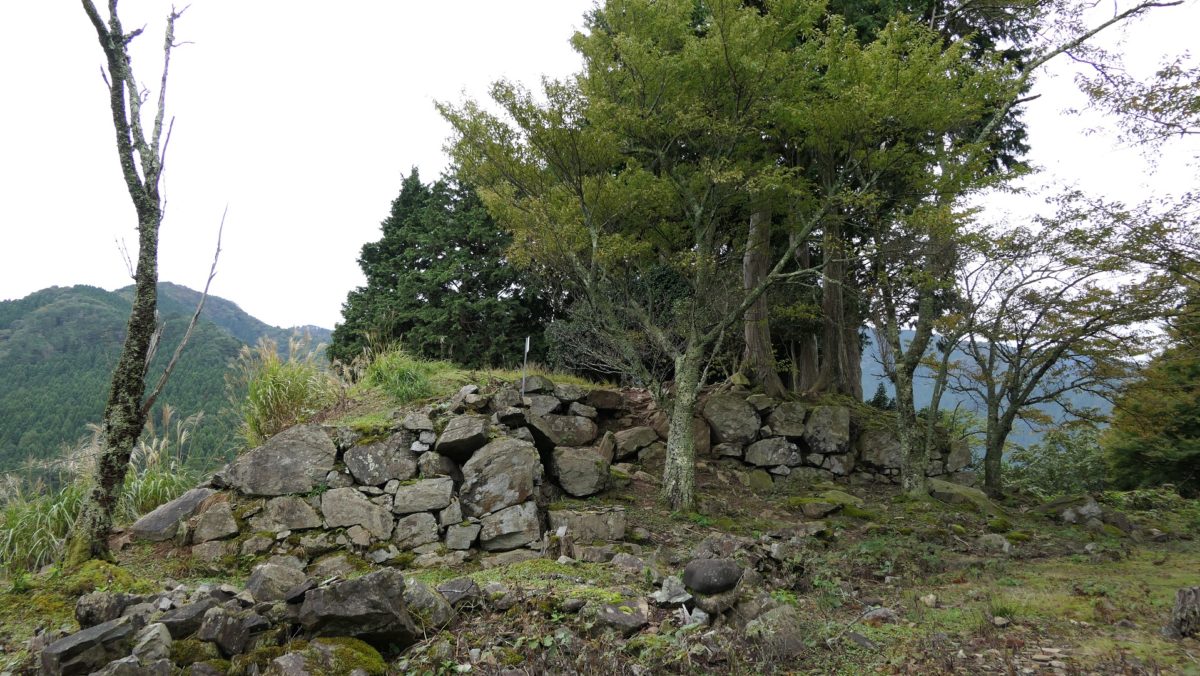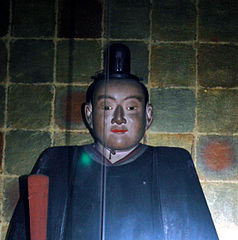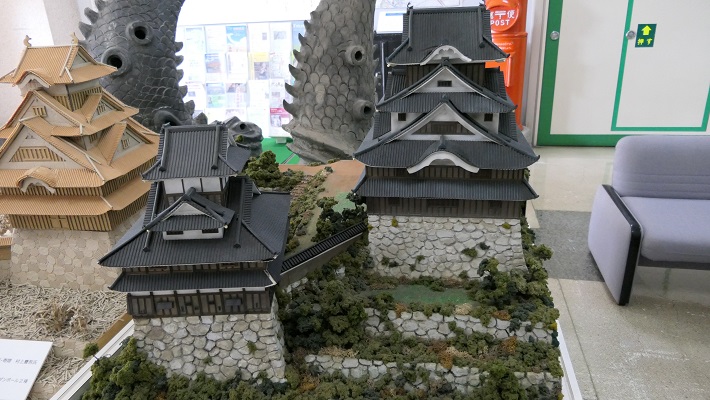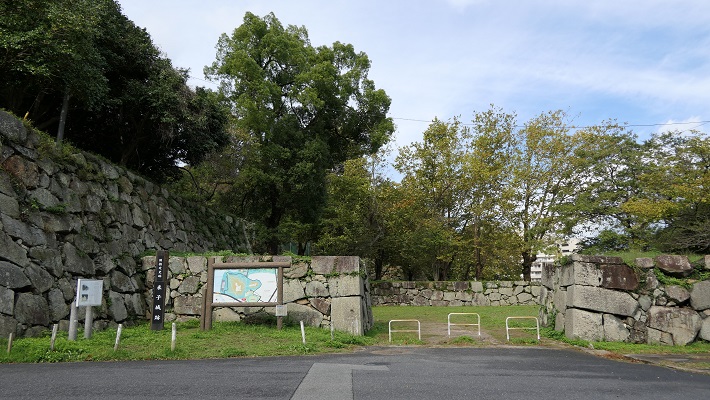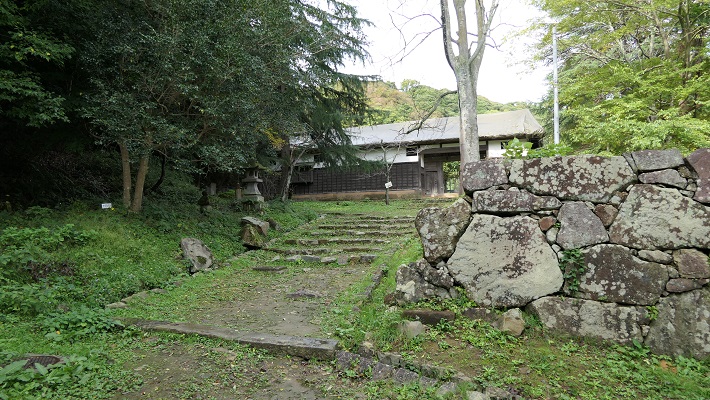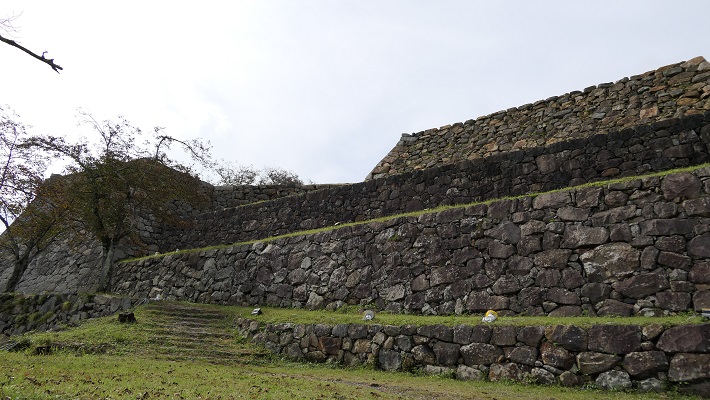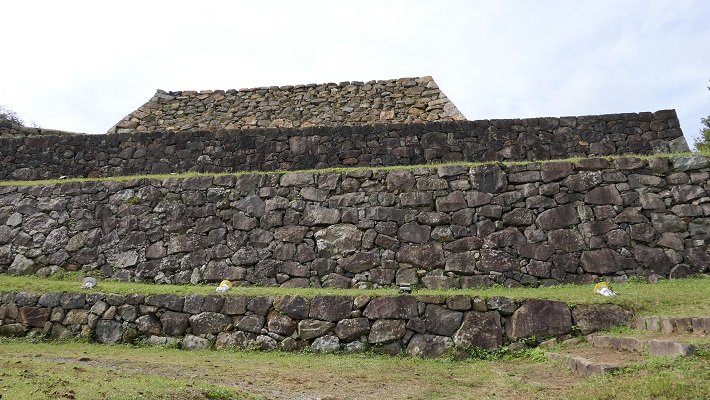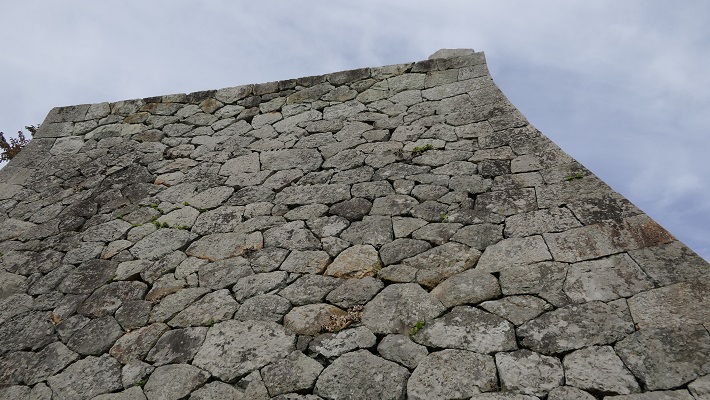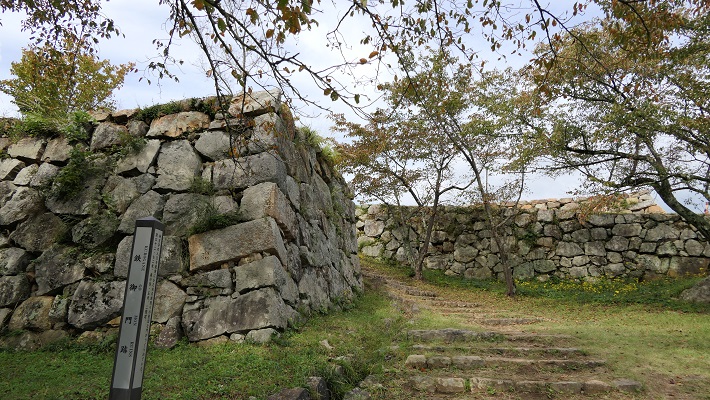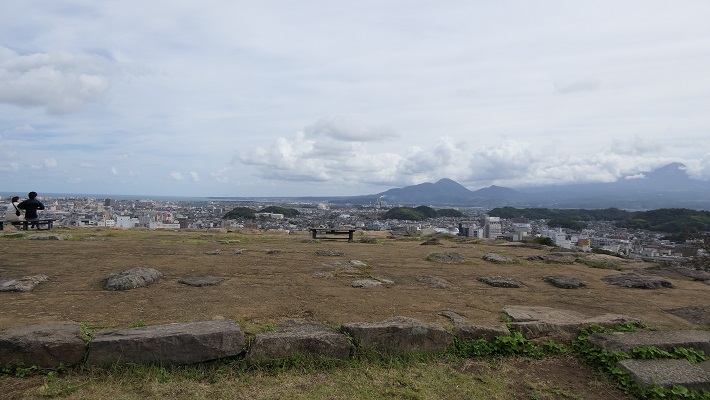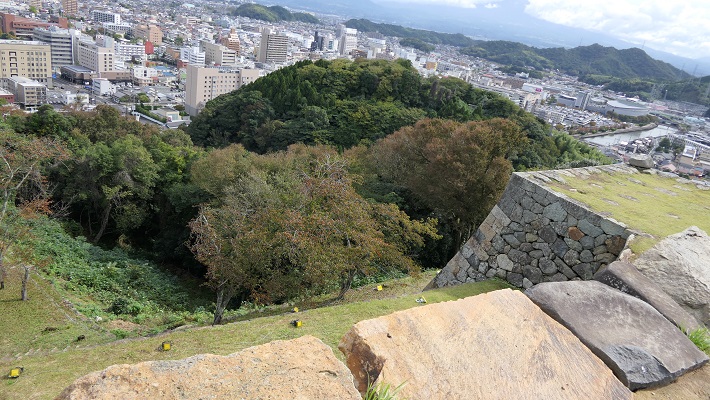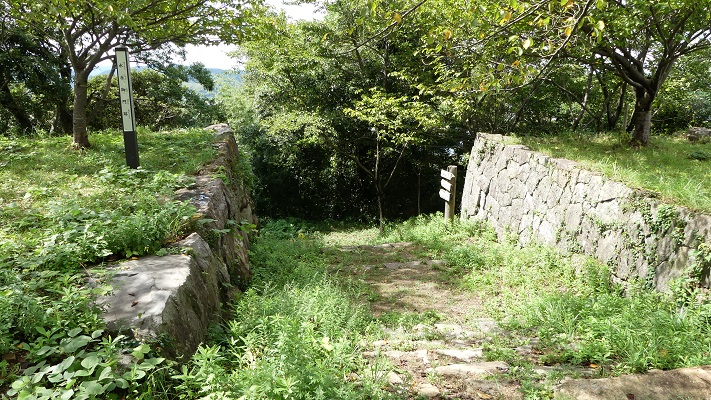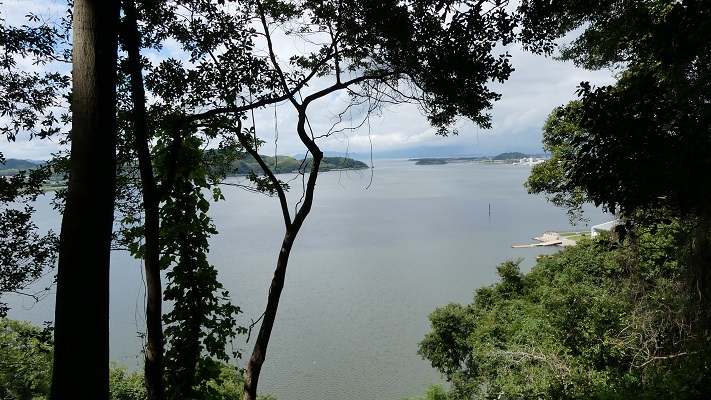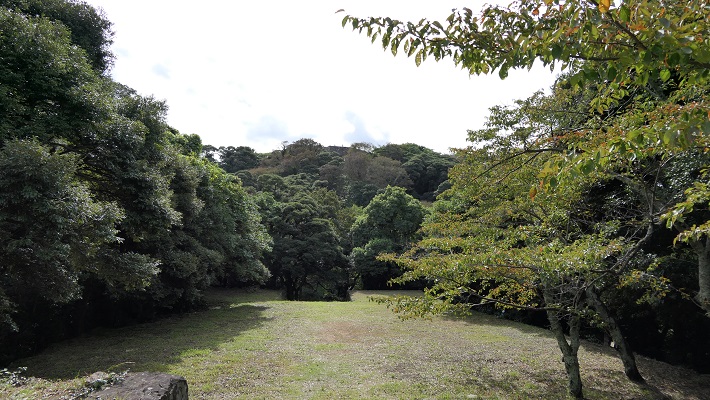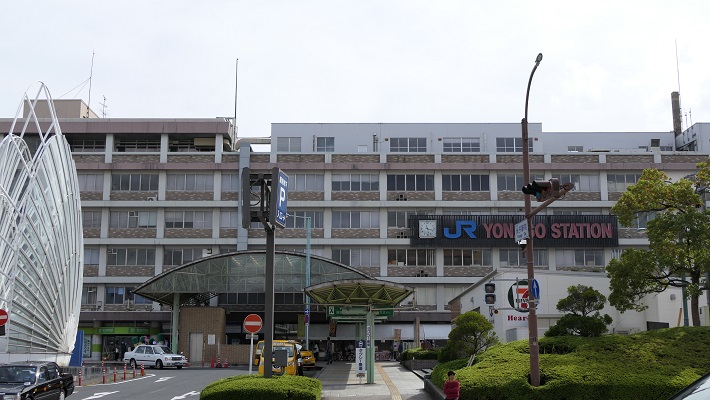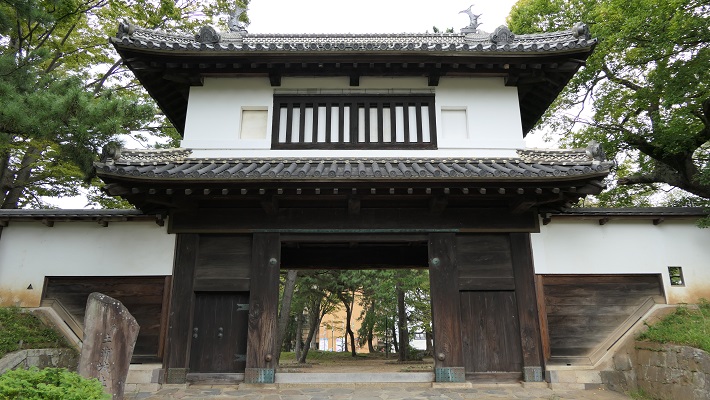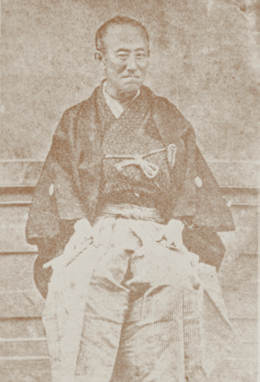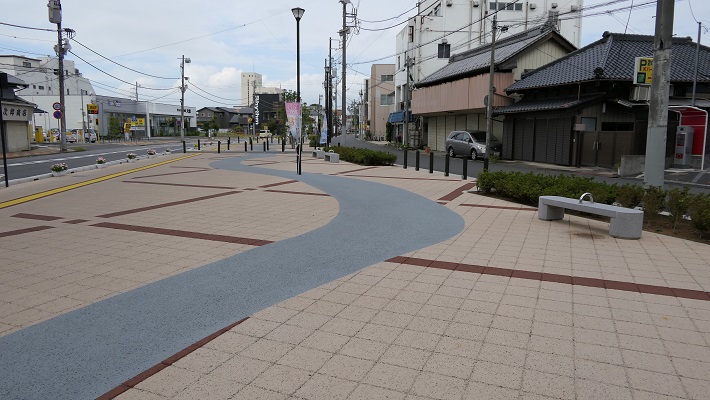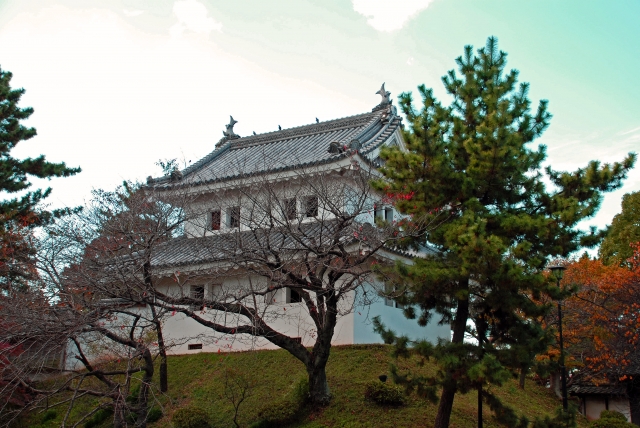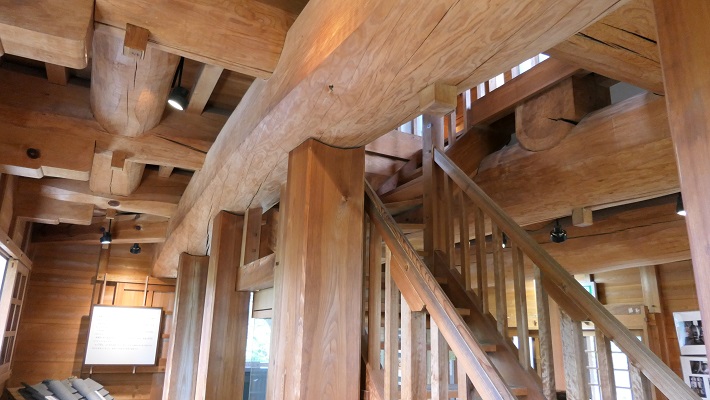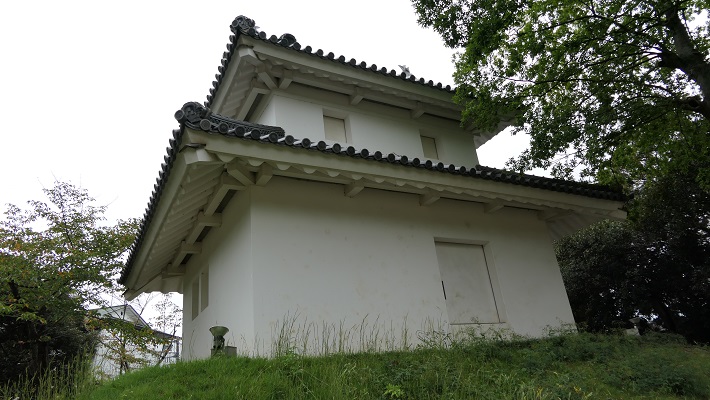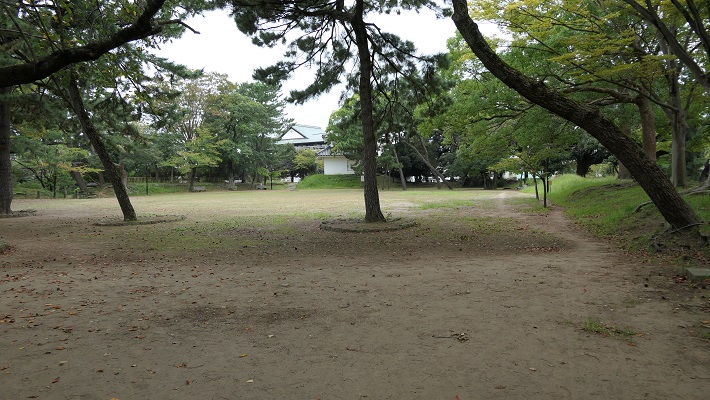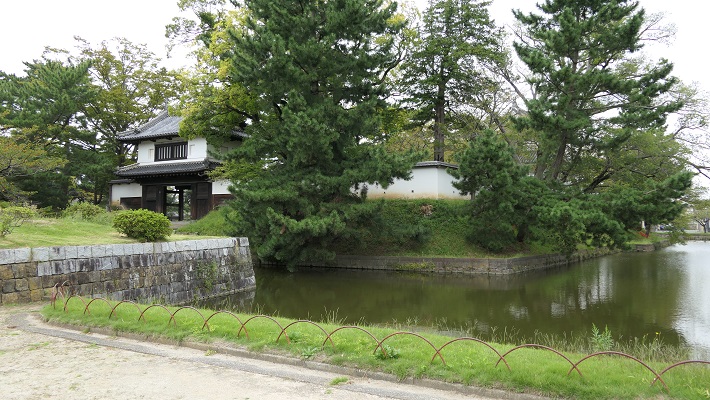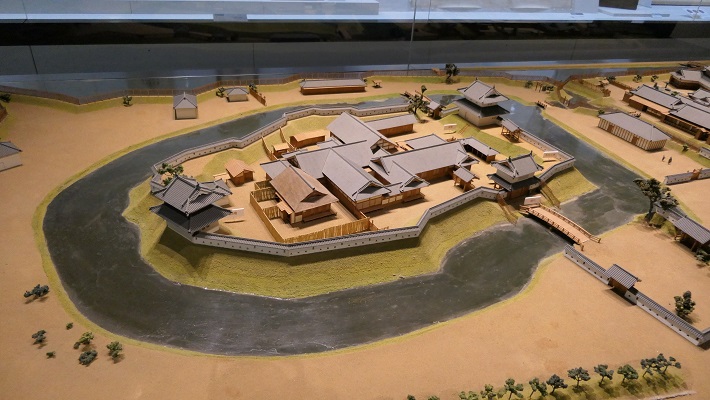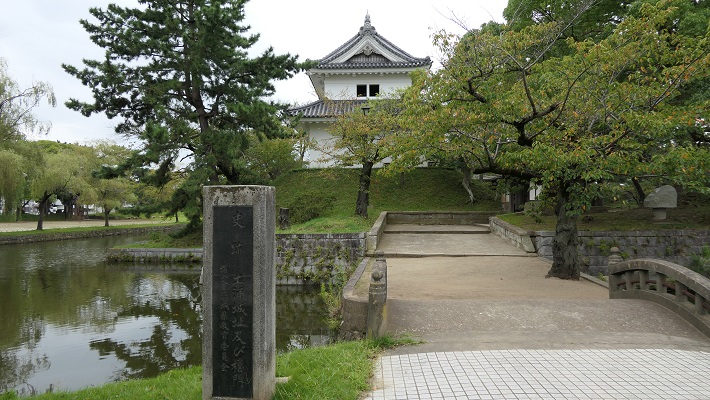立地と歴史~Location and History
戦略的な立地~Strategic Location
中国地方のほとんどは山地です。中世にはその山々に多くの城が築かれました。若桜鬼ヶ城は、そのうちの一つです。この城は因幡国(現在の鳥取県の一部)の鶴尾山という標高452の山の上に築かれました。そして、但馬と播磨(いずれも現在の兵庫県の一部)という2つの国への街道の結節点に当たったため、戦略的に重要視されました。
Most of Chugoku Region consists of mountain areas. In the Middle Age, many castles were built in the mountains. Wakasa-Oniga-Jo (Jo means castle) was one of them. The castle was on the top of a 452 m high mountain called Tsuruo-yama in Inaba Province (part of now Tottori Pref.). It was considered important because of its strategic location being near the route connecting two provinces, Tajima and Harima (parts of now Hyogo Pref.).
戦国時代の戦い~Battle in Sengoku Period
この城は戦国時代の1575年に脚光を浴びます。以前の主君であった尼子氏を再興するために山中鹿之助が、月山富田城で戦いそこから撤退した後、若桜鬼ヶ城を乗っ取ったのです。彼の敵である毛利氏は、すぐさま反撃し、鹿之助は残念ながら再度撤退せざるを得ませんでした。
This castle was featured in 1575, “Sengoku” or Waring States Period. Shikanosuke Yamanaka who tried to revive his former master Amago clan, captured the castle after he fought at Gassan-Toda Castle and then withdrew from it. His enemy, Mori clan struke back right away and Shikanosuke unfortunately had to withdraw again.
.jpg)
江戸時代初期に廃城~Destroyed in early Edo Period
1581年の鳥取城の戦いの後、天下人豊臣秀吉配下の木下氏が若桜鬼ヶ城の城主となりました。1600年、徳川幕府は木下氏を山崎氏に交代させました。この両氏が、石垣を築いたり、天守を作ったりして、城を強化したと言われています。1617年、城は鳥取藩の藩主である池田氏に帰属します。ところが、池田氏は同じ年、一国一城令によりこの城を破壊することになってしまいました。
After the battle of Tottori Castle in 1581, the Kinoshita clan under the ruler Hideyoshi Toyotomi became the lord of Wakasa-Oniga-Jo. In 1600, the Tokugawa Shogunate replaced Kinoshita with the Yamazaki clan. It is said that both clans reinforced the castle by building stone walls and adding the main tower or “Tenshu”. In 1617, the castle belonged to the Ikeda clan, the lord of Tottori Domain. However, the clan had to destroy the castle on the same year, due to the law of one castle per province.
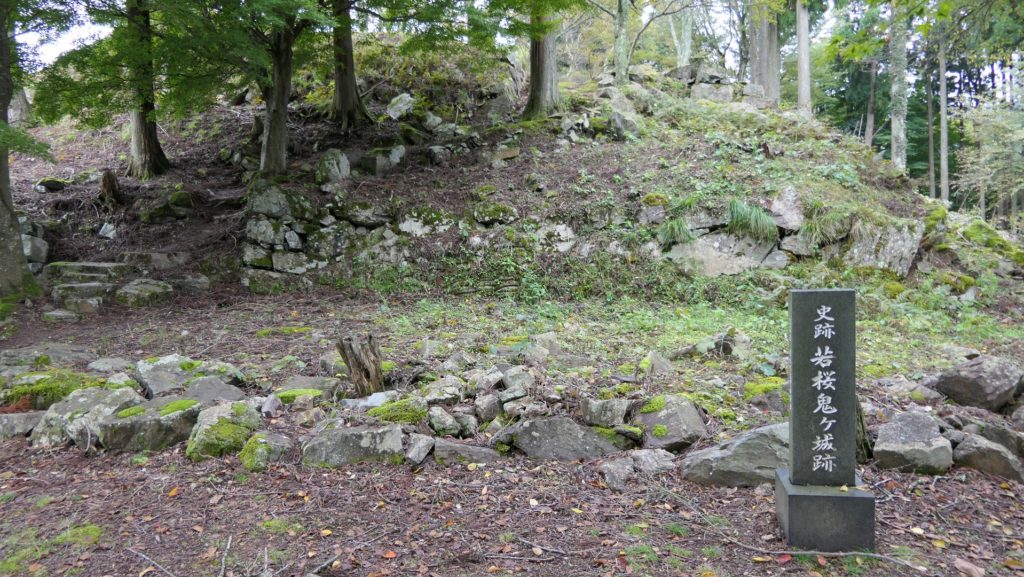
特徴~Features
城周辺の航空写真~The aerial photo of around the castle頂上へ約1時間の道のり~About 1 hour walk to the top
現在、城跡へは車か徒歩で行きます。もし歩かれるのでしたら、3つの登り口があります。どの道を選んでも、200mの標高差を登らねばならず、約1時間はかかります。坂道や尾根を登っていくと、最初に「六角石垣」と呼ばれる石垣にたどり着きます。この石垣は頂上から延びる尾根に築かれ、本丸を守る役割がありました。
You can go to the castle ruins by car or on foot. If you go by walk, there are three trails you can use. Whichever trail you select, you have to climb a 200m elevation and this takes about one hour. After walking along the trail on slopes and ridges, you will first reach the ruins of stone walls called “Rokkaku-Ishigaki” or the Hexagon stone walls. The stone walls were built on the ridge which stretches from the top to guard the Honmaru enclosure.

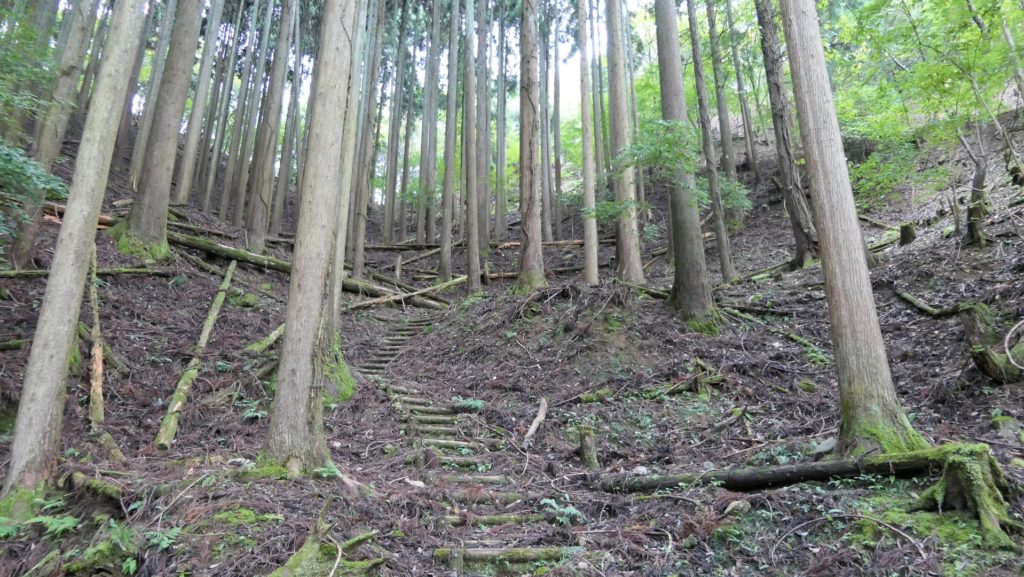

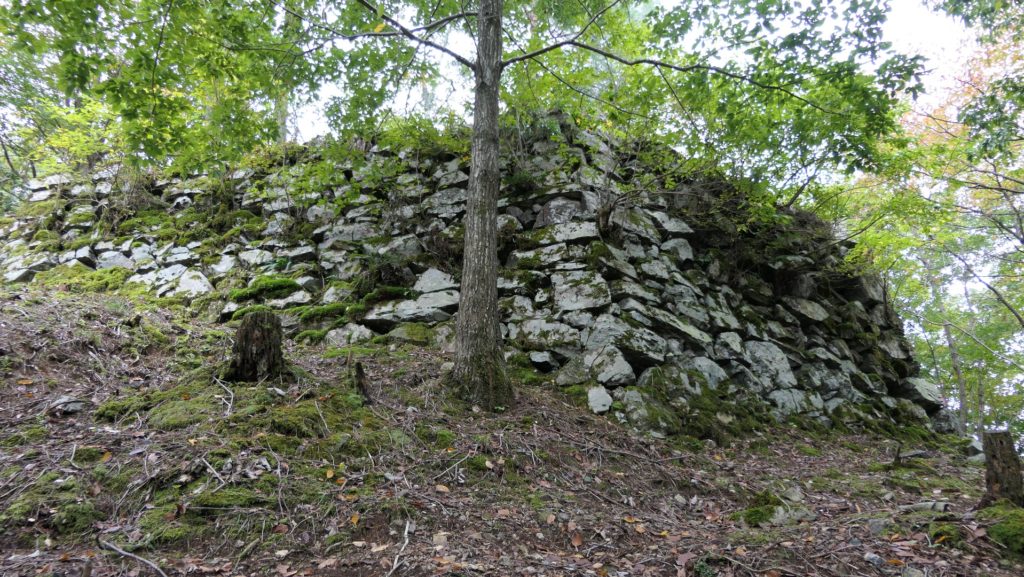
更に頂上に向かって進むと、電線の柵が目に入ってきます。この柵は、夜間に本丸に入ってくる動物を防ぐために設置されています。時が過ぎ、この城の敵は変わってしまい、敵を防ぐ方法も変わったてしまったということなのでしょうか。先に進むには、電線のフックを外して入り、また元の位置に戻します。電気は昼間は流れていませんので、ご心配なく。
Going further to the top, you will see fences with electric wires. They are installed for protecting Honmaru from animals at night. The castle has had different kinds of enemies over time and the means to repulse them have changed too. You have to remove the hooks of wires and hang them up to their original positions to enter the top. Don’t worry though, the electricity is not activated during daytime.

山頂に残る遺跡~Ruins on the top
山の頂上には、本丸、二の丸、三の丸の3つの曲輪があります。石垣も残っていますが、所々破壊されていたり、崩れたりしています。頂上からの景色は素晴らしく、若桜町の街並みが見えます。昔の但馬国と播磨国の分岐点もここから眺めることができます。そのことがこの城が重要であった理由の一つでした。
The top of the mountain has three enclosures – Honmaru or the Main enclosure, Ninomaru or the Second one, and Sannomaru or the Third one. There are also stone walls ruins, but they are partly destroyed or collapsed. Historians say that it shows the state of the castle just after it was destroyed. You can get great views from the top. One of them is the view of Wakasa town. Another is the view of the junction to the routes for former Tajima and Harima Provinces. That’s one of the reasons for the importance of the castle.
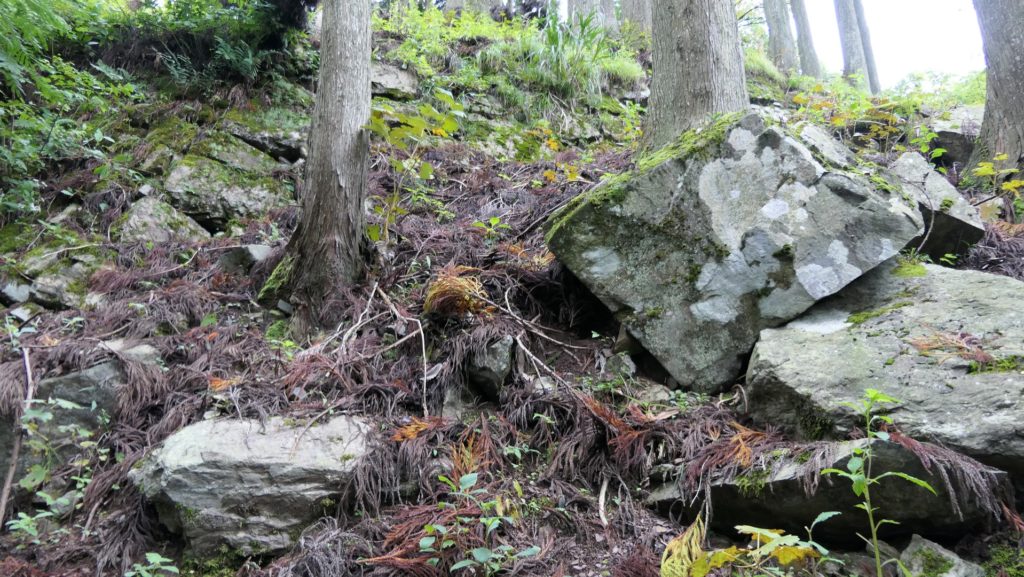
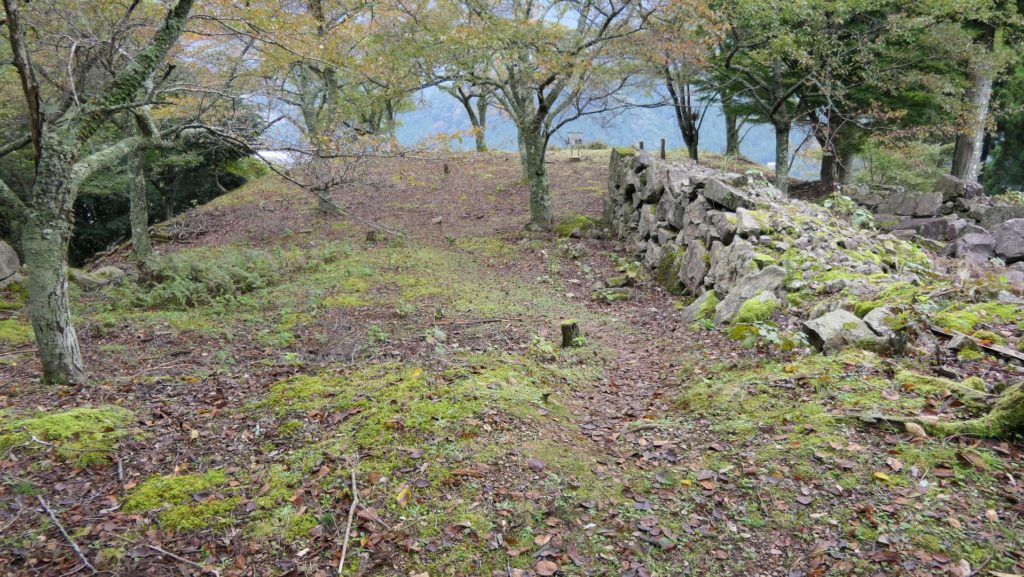

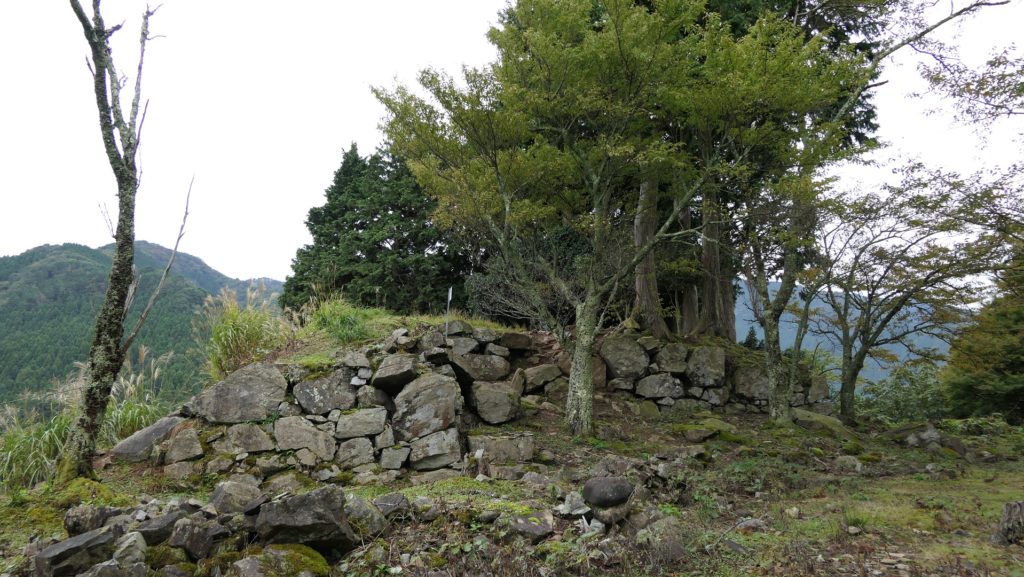
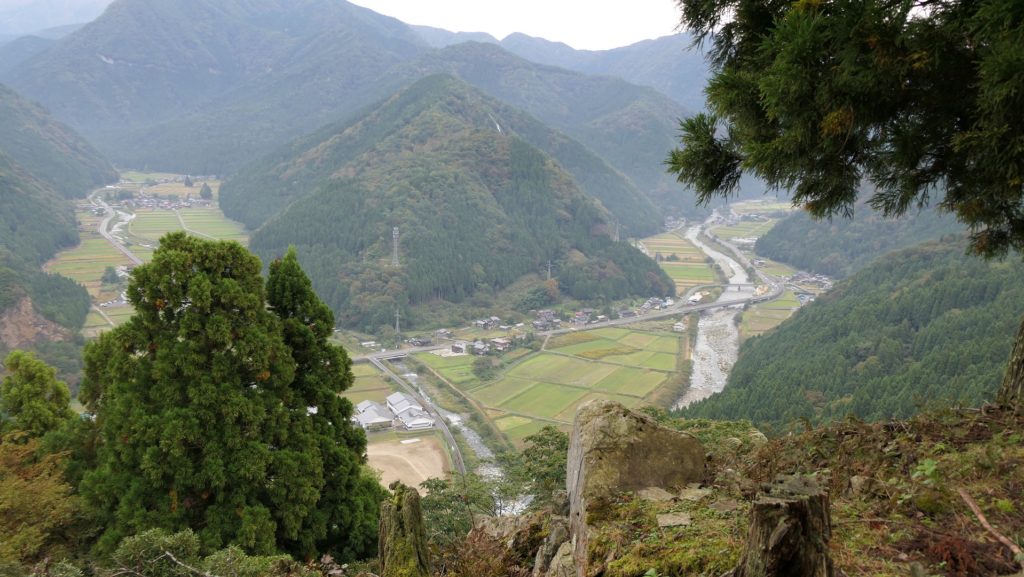
その後~Later History
若桜鬼ヶ城の遺跡は長い間放置されてきました。1998年から2003年に渡る鳥取県の発掘調査により、この遺跡は破壊された状態を残す極めて稀な遺跡であることがわかりました。2008年には、国の史跡に指定されています。
The ruins of Wakasa-Oniga-Jo have been abandoned for a long time. The excavation between 1998 and 2003 by Tottori Prefecture found that the ruins are rare because they remained after destruction. They were designated as a National Historic Site in 2008.
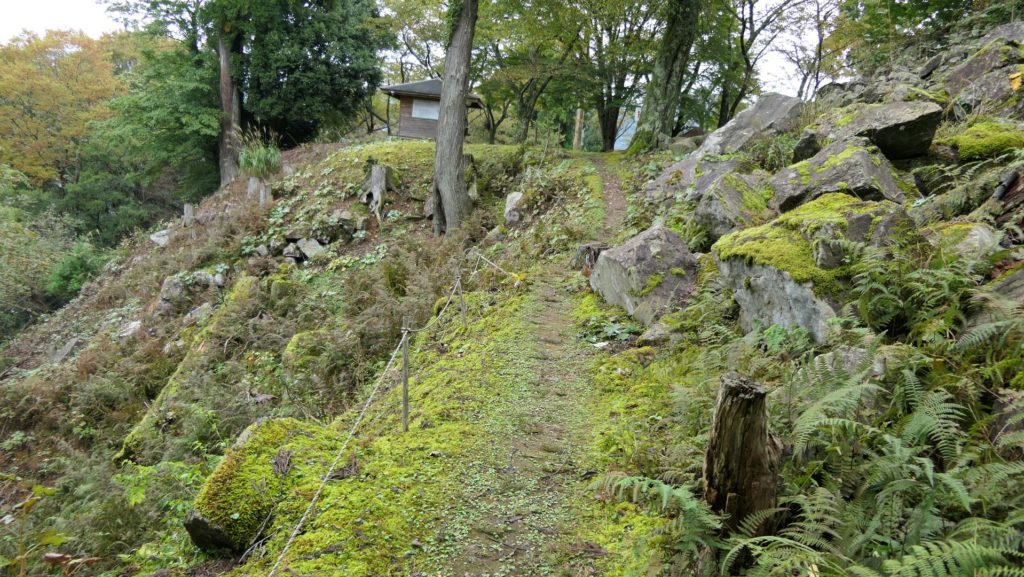
私の感想~My Impression
この城跡は素晴らしいと思います。また若桜町も、のどかで良い雰囲気が残っています。城跡の行きか帰りかに道を歩いてみたら、見所がたくさんあります。例えば、美しくそしてよく整備された森林が見えます。それから、道端には石仏が並んでいます。素朴で、地元の人たちの信仰心を感じます。
I think the ruins of the castle are great. I also think Wakasa Town has a good laid-back atmosphere. If you walk along the road to or from the castle ruins, you can find many attractions. For example, there are beautiful and well maintained forests. You can also see some status of Buddha along the road. They look pretty and show local people’s religious faith.
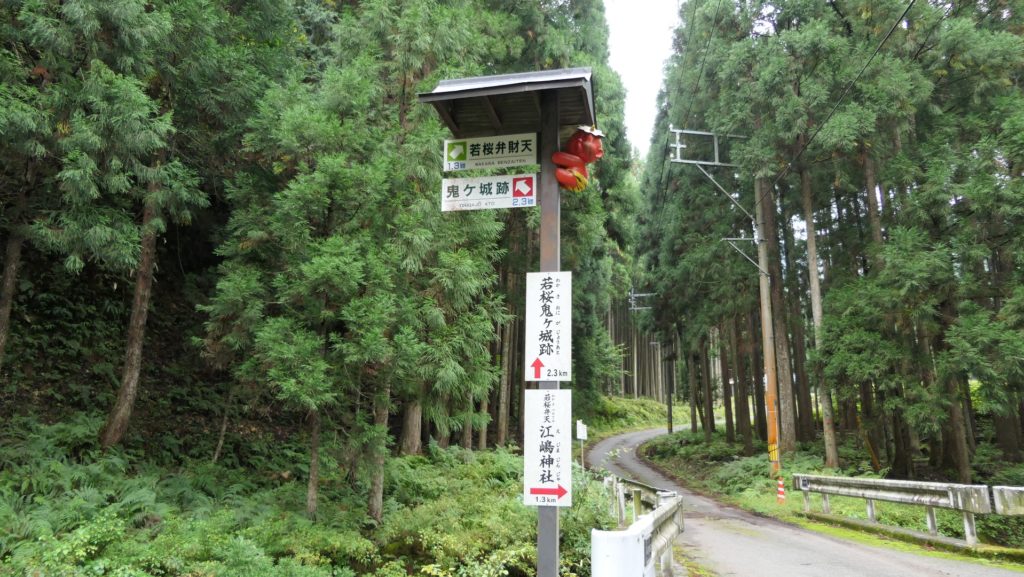

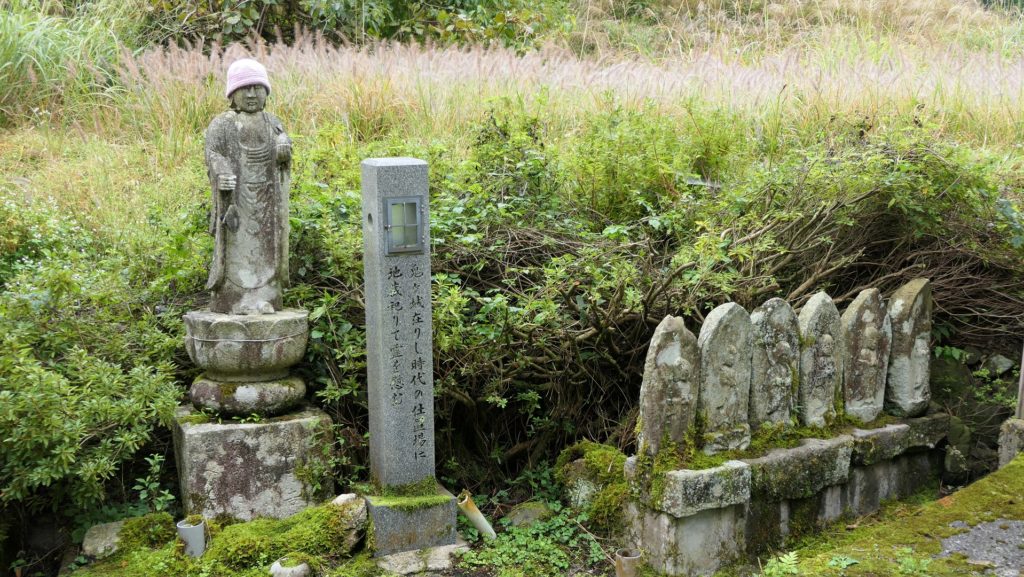
町の中心部では、多くの「蔵造り」の家が続く通りがあります。これは、火災から建物を守るための伝統的建築法です。また、見事な赤瓦を使った家々もあります。その中では、特にお寺が際立っています。
In the town area, there is a street with many houses with “Kura-zukuri” or thick mortal walls. This traditional building method was used to protect buildings from fires. You can also see a lot of buildings with beautiful red roof tiles. Temples stand out in particular.
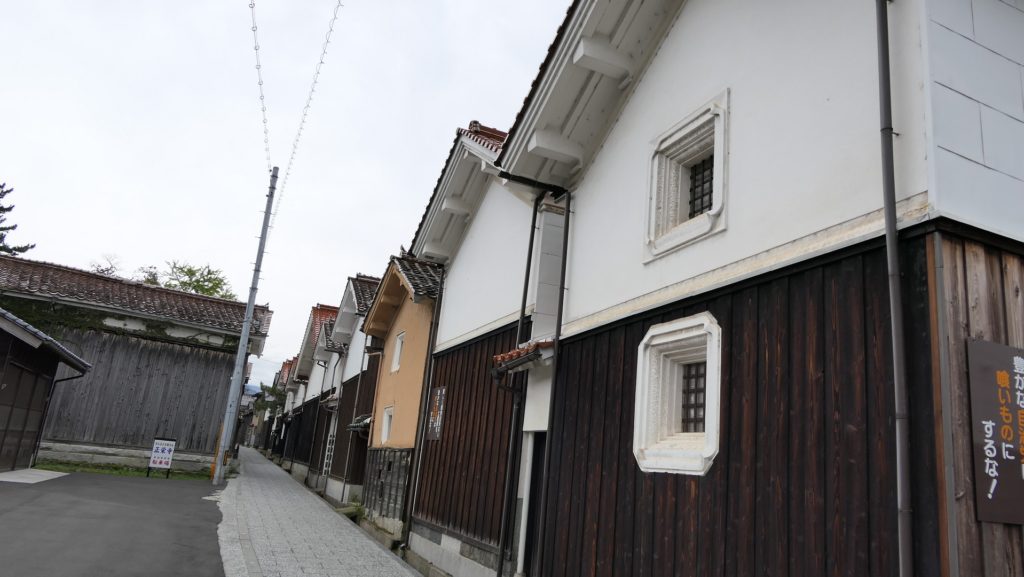

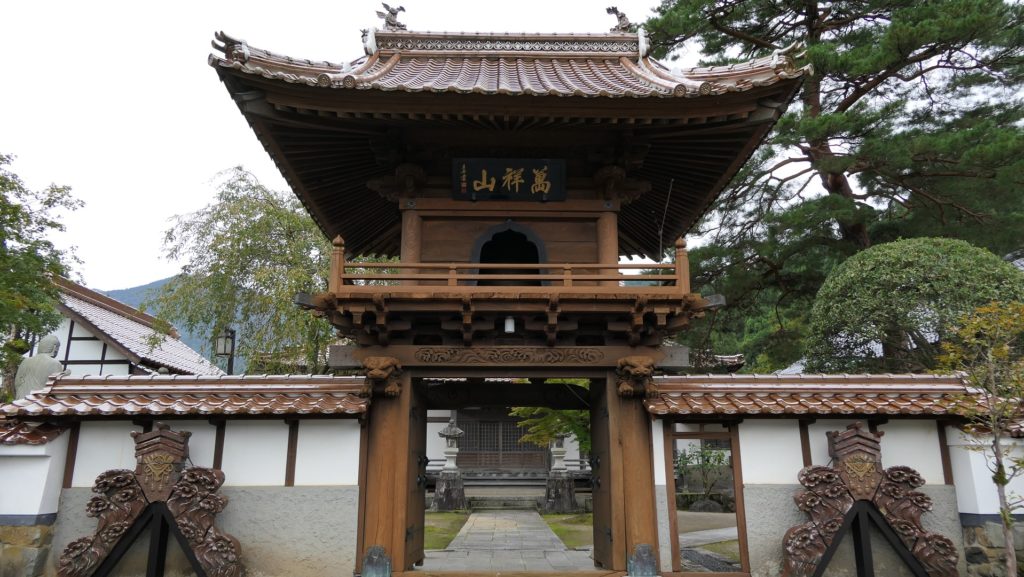
ここに行くには~How to get There
車で行く場合:鳥取自動車道の河原ICから約30分です。山頂の近くに駐車場があります。
電車の場合は、若桜鉄道の若桜駅から歩いて1時間前後かかりますが、先ほどご紹介した通り、道沿いにはたくさんの見所があります。
更には、若桜鉄道には素敵な観光列車があります。昭和時代を彷彿とさせるレトロなデザインです。町の景色を楽しみながら、ゆったり快適に電車に揺られてみるのもよいでしょう。
If you want to go there by car: It takes about 30 minutes from the Kawahara IC on Tottori Expressway. There is a parking lot near the top.
When using the train, it takes around one hour on foot from Wakasa station on Wakasa Railway, but you can enjoy a lot of things along the way like I mentioned above.
In addition, Wakasa Railway has fantastic tourist trains. They have a retro design inspired by the Showa Era. You can take the train relaxingly and comfortably while enjoying the view of the town.
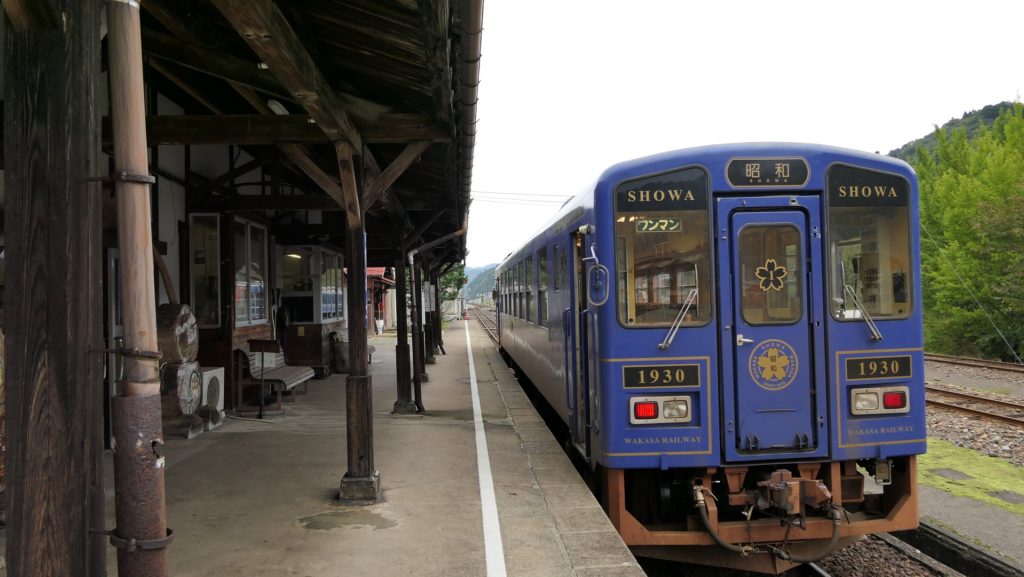
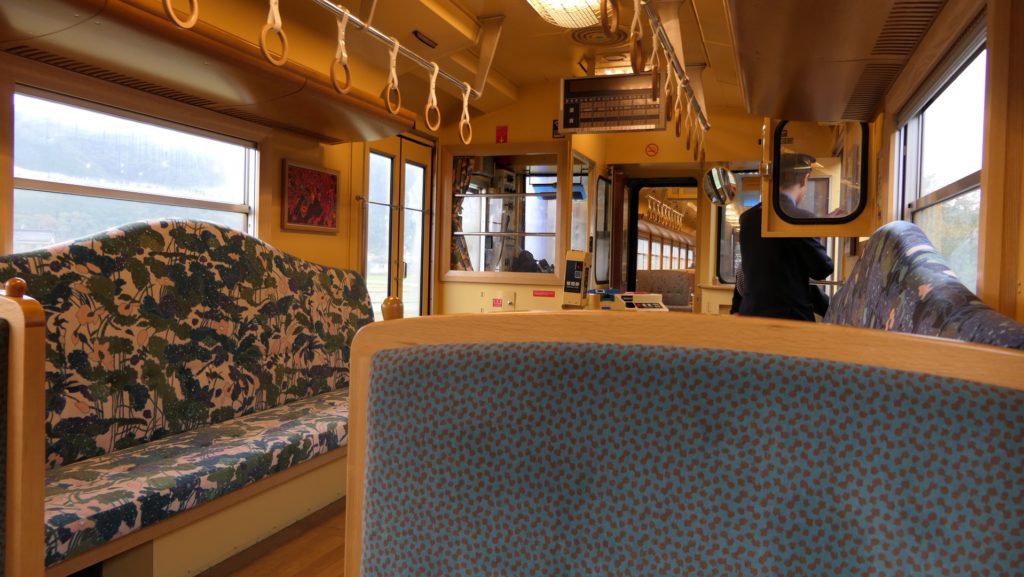
リンク、参考情報~Links and References
・鬼ヶ城跡、若桜町公式ウェブサイト~Wakasa Town Official Website
・「よみがえる日本の城6」学研(Japanese Book)
・「尼子氏の城郭と合戦/寺村毅著」戒光祥出版(Japanese Book)

